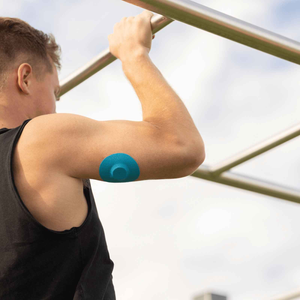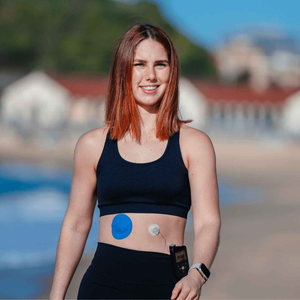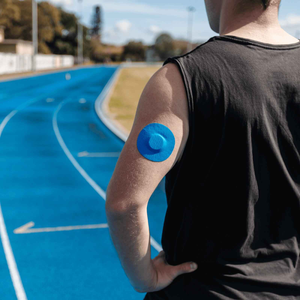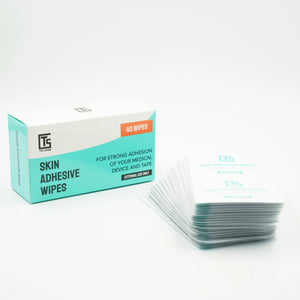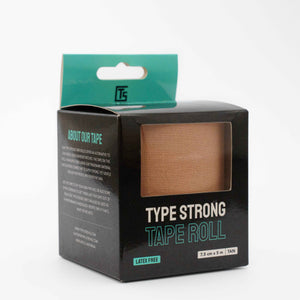You’re pushing through your workout, sweat building, energy high. Then it hits - a little tug, a patch edge peeling, a sensor shifting. It’s frustrating, especially when you’ve done everything right.
If exercise has ever compromised your CGM patch, you’re not alone. Movement is great for managing blood glucose, but it can mess with how well your patch sticks. The good news? There are simple fixes that don’t involve skipping the gym or slowing down.
Why your CGM patch lifts during workouts
Movement, sweat, and skin friction all play a role. And when you’re active, your patch works harder to stay put.
Common culprits include:
- Heat and perspiration breaking down adhesive
- Stretching skin pulling on the patch’s edges
- Tight clothing rubbing against the patch site
- Skin becoming slippery during or after exercise
Even if your sensor readings seem fine, a loose patch can shorten sensor life or lead to inaccurate data. If this keeps happening, it might be worth looking into why some patches don't always work for certain skin types or devices.
Signs your patch is starting to give out
Not all patch problems happen instantly. Some creep up during your session and catch you off guard. Watch for these early red flags:
|
What You Notice |
What It Could Mean |
|
Edges peeling or curling |
Adhesive struggling due to moisture or heat |
|
Sensor feels wobbly or loose |
Skin friction or sweat is interfering |
|
Mild burning or stinging |
Irritation from trapped sweat under the patch |
|
Dropout in sensor readings |
Device may have partially detached |
If these are frequent, it may be a sign your current patch is too weak for daily life.
How to keep your CGM patch secure while staying active
You don’t have to avoid movement or sports - just set your patch up for success. These practical steps can make a big difference.
Clean skin equals better grip
One of the biggest mistakes is applying your patch to skin that’s oily or damp. For your patch to really hold, the surface needs to be clean and dry.
- Wipe the site with an alcohol swab
- Let it dry fully (no shortcuts!)
- Avoid using lotion or sunscreen nearby
- Use adhesive wipes if you know you’re a heavy sweater
Want a deeper dive into prep? This skin prep guide covers it all.

Pick a patch designed for movement
Some patches are stiff or too thin, and they just can’t keep up. If you’re lifting, running, or stretching regularly, you need one that bends and breathes with you.
Look for:
- Flexible material with 4-way stretch
- Breathable backing
- Strong, skin-friendly adhesive
Explore our CGM patch range, including Dexcom G7 and Omnipod options built for high activity.
If you're unsure which patch is right for you, see our breakdown of pre-cut vs DIY patch styles.
Let your patch settle in
It’s tempting to slap on a fresh patch and head straight to the gym. But that early bond time really matters.
If you've struggled with adhesion on your skin in the past, try to give your patch at least 8 hours before exercising. Applying it the night before a workout helps the adhesive set properly.
While this isn't needed for most of our customers, everyone's skin is different, and this has been known to help a few people. For more on wear times and bonding periods, check our guide to how long a CGM patch should last.
Mid-workout patch drama? Here’s what to do
Don’t stress if your patch starts lifting during a workout. Instead, handle it calmly:
- Avoid peeling it off unless it’s clearly falling apart
- Press down and gently rub any loose corners if they’ve started to lift
- After exercise, dry the area fully and reinforce with a second patch or a tape roll
- Keep another pack in your gym bag just in case (bundling)
And if patch issues are a regular problem, consider adding some of our tape roll to the edges.

Still having trouble? Learn what other active users do to protect their CGM in unpredictable environments.
People also ask
- Can you work out with a CGM patch? Yes. Many CGM users exercise daily without sensor problems. Using the right patch and prepping your skin correctly makes a big difference in patch durability.
- What should I do if my CGM patch keeps falling off? Check your prep process first. Wipe your skin with alcohol, let it dry, and try adhesive wipes. If it still lifts, switch to a high-performance patch like those in our collection, or troubleshoot with our guide to common patch issues.
- Does sweat mess with CGM sensors? Sweat won’t interfere with your actual readings, but it can reduce how well your CGM patch sticks. That’s why skin prep and sweat-friendly patches matter.
Movement is good. Your patch should be too.
You shouldn’t have to choose between stable glucose data and your favourite workout. With the right patch and a few smart habits, you can run, lift, or dance without worrying your sensor will fall off.
At Type Strong, we design patches that work with you - not against you. Whether you're headed to the gym or just chasing after a toddler, we’ve got your back.
